MSI ships the GT72 2QE in a large box sporting the company's dragon – Gaming – branding.
A cloth sleeve and some good protection are used to ensure that the laptop arrives safely.
The hefty power brick is manufactured by Delta Electronics and is rated for an 11.8A output at 19.5V, which translates into a 230W power output.
Measuring in at 428 (W) x 294 (D) x 48 (H), MSI's sizable GT72 uses a metal panel to style the exterior. Centralised in the metal panel is MSI's white LED-equipped dragon logo and the company name.
While the brushed metal design works wonders for styling, it has a horrible affect on cleanliness. The material catches fingerprints and grease with absolute ease which rapidly spoils the aesthetic appearance.
Weighing a sizable 3.78kg when equipped with the 9-cell, 83Whr battery, MSI's GT72 2QE Dominator Pro G is far from a stick it in the backpack and go laptop. It is, however, undeniably more portable than a fully-fledged desktop system, so the term desktop replacement starts getting thrown about. And it's hard to disagree with that marketing term when factoring in the Broadwell i7 5700HQ CPU, 16GB of DDR3-1600 RAM, and GTX 980M GPU.
Two LED strips are found on the laptop's leading edge, with the left side strip incorporating the white power, battery, and HDD activity indicators.
The contrast between the metal panel behind the screen and the (largely) plastic chassis is evident very quickly. While MSI's chosen plastic is fairly solid, it has a far less premium feel to it than the metal. There are noticeable creaks and flexes from the chassis when force is applied in certain locations.
A DVD drive is found on the right side. A total of six USB Gen 3 ports are distributed between the left and right sides of the laptop, two of which are 10Gbps USB 3.1, while the remaining four operate at 5Gbps USB 3.0 bandwidth. I like MSI's USB port distribution, as well as the spacing between neighbouring ports.
Also on the left side is a card reader which, based on our testing, is connected with enough bandwidth to feed 90MBps to our Class 10 UHS-I SD card. Four gold-plated audio jacks complete the left side – two of which are the standard headphone and microphone ports, with the other two being line in and line out jacks.
Moving around to the rear side, MSI equips the Dominator Pro G with a pair of Mini-DisplayPort 1.2 ports, a HDMI 1.4 connector, Killer E2200 Gigabit Ethernet, and the charger input. I am slightly disappointed to see the application of a v1.4 HDMI port on a machine that could comfortably drive some older gaming titles on a 4K TV at 60FPS.
MSI's Matrix Display technology is supported, meaning that the laptop's screen can be used in addition to a trio of external monitors. This is actually something that a multi-purpose user, such as a student, may find very useful – four high resolution displays can be used when working and then just one or two when gaming (and monitoring temperatures and video streams etc.).
Also visible on the rear side are the Kensington lock point and two large vents for MSI's hefty cooling system. More on that cooling system later.
The bottom panel of casing is formed of a fairly solid plastic material, although there definitely is not a premium feel to this section. Large vent holes combined with four rubber-tipped feet give the pair of cooling fans room to breathe.
A closer look at the panel highlights a noticeable clearance section between the laptop hardware and plastic covering. This may not be the most space-efficient choice by MSI's design team, nor does it aid the unit's thickness, however it may have a useful benefit to cooling performance.
On the right side of the picture (the left side during usage) is the 5W Dynaudio subwoofer. Aided by the Audio Boost 2 technology and Nahimic audio processing software, MSI's 2.1 Dynaudio sound system delivers one of the best audio experiences that I have heard from a laptop. The bass packed a noticeable punch when it was required, and voice clarity from the pair of 3W speakers was a positive.
One of the Dominator Pro G's jewels is its 17.3″ 1920×1080 PLS panel that features G-Sync support and runs at 75Hz. The PLS panel coupled with the screen's anti-glare coating allow for accurate colour reproduction with excellent viewing angles. Brightness was able to be cranked up to a solid level, although operation in direct sunlight may see users yearning for higher brightness levels.
17.3″ is a little on the large side for a 1920×1080 resolution, so don't expect a retina-like pixel density. With that said, the 2 Megapixel, 16×9 Full HD resolution still remains the most popular choice amongst gamers. PLS simply adds some glamour to the colour accuracy while still aiming to maintain a functional level of lag.
With a desktop system and monitor, G-Sync requires a supported graphics card, display, and the G-Sync module. Because a laptop's screen is fed directly by the machine's GPU, a G-Sync scaler is not required for the laptop to support the frame-synchronising technology. G-Sync Direct relies solely upon the application of supported Nvidia graphics card and the G-Sync panel.
It is worth noting that manually updating to the latest (353.30) Nvidia drivers was required in order to get the 75Hz operation and windowed G-Sync mode functioning. MSI's website has yet to be updated with Nvidia's latest drivers and Geforce Experience did not prompt the update either. MSI tells us that newer stock should ship with the latest Nvidia drivers, making 75Hz and windowed G-Sync accessible out-of-the-box.
A Full HD, 30 FPS webcam is found in its typical location. Close to the webcam are audio receivers for the built-in microphone.
MSI puts emphasis on the webcam and opts for a Full HD model in order to please game streamers. With so much linkage being made between MSI and XSplit Gamecaster software, a HD webcam makes sense on the gaming laptop.
The full LED-backlit SteelSeries keyboard features SteelSeries Engine key control. This is useful to gamers who may want to create macros and assign them to specific buttons, control their keyboard LED colours, or even track their usage statistics.
While some of the layout features take a little getting used to (like the Windows key positioning and half-sized enter key), and others are plain stupid (placing a delete function next to the mute or insert button), typing on the keyboard very quickly becomes a pleasant experience.
The key pitch is good enough to know that an obvious press has been made, and feedback following an actuation is excellent, so gamers should be pleased. MSI and SteelSeries have designed one of the better laptop keyboards that I have used and, with a little practice, I would have no comfort complaints towards using it on a daily basis. Move that oddly placed delete function and the most obvious mode of mistakes is removed.
My positivity towards the keyboard does not extend to the trackpad. I found the unit frustrating to use. For a start, there is no clear boundary (other than an LED strip) that segregates the trackpad from the laptop chassis. I found this very annoying, especially when trying to locate the pad without looking at it (i.e. during gaming).
Omission of the boundary becomes even more frustrating when a useful function added by MSI becomes accidentally applied. Swiping in from the trackpad's right side brings up the Windows right-hand access bar. This gives quick access to the Search and Settings options and acts as a valid substitute for a touch screen (in my opinion). But without a boundary for the trackpad, this feature is regularly applied without meaning to do so. This results in the right-hand access bar flashing onto the screen at unexpected times – a process which quickly becomes frustrating.
Some users may like the streamlined trackpad for its design pointers; however I dislike it from a function and ease-of-use point of view. And the choice of materials warrants questioning by virtue of the trackpad area becoming a greasy fingerprint frenzy after very little use.
The buttons are fine – left click has a firm feel to it and can be actuated across the entire button. Right click can also be actuated along its length however the feedback seems less tactile.
Five buttons on the top-left side control the power, GPU toggle mode, fan speed boost, XSplit app launch, and SteelSeries keyboard LED colour. Pressing the fan button steadily ramps the pair of blowers up to an intrusive level, although this is useful for a quick burst of higher-performance cooling.
Without supporting Nvidia Optimus technology, users are forced to manually push a button when they want to switch between using the discrete GTX 980M GPU and the Broadwell processor's integrated HD 5600 chip. Pressing the button prompts the user to reboot the system so that the relevant graphics adapter can be switched. This is a time-wasting process that will leave many users simply running the GTX 980M GPU at all times, thus having a negative effect on battery life and temperatures.
Full, horizontal rotation can be completed by the screen. This may be useful if the system is being used to drive an external display and has to be stashed out of sight.
MSI clearly has not aimed to create a thin and portable system and instead opts to use a greater level of thickness in order to cram an adequate cooling system under the hood. Spoiler alert: it is a smart move because MSI utilises one of the best cooling systems that you are likely to find on a laptop.
Removing the bottom plastic panel forces a user to ‘officially' void their warranty. One of the screws is positioned beneath the warning sticker. This is what I deem to be a sly move that many manufacturers of all hardware use, and it is one that really infuriates me.
I would like to think that users spending £2k on a laptop will have a general understanding of its components inside. And if they do not, I would also like to think that they are smart enough not to mess with things they don't understand. I do not believe that a user should be forced to void their laptop warranty if they simply want to add RAM or a new M.2 SSD.
The MSI UK team informed us that they will honour the system's warranty (not including the newly installed components) if the sticker is replaced. In other words, peel off the sticker carefully and then return it once the upgrades have been performed. The sticker is used to deter less experienced users from messing with the internals.
MSI's internal component layout choices are smart. There are two 2.5″ bays (only one cable is supplied and used on this model), one of which is occupied by a 1TB 7200RPM HGST Travelstar 7K1000 HDD. A daughter-board is used to connect up to four M.2 SSDs to a single connection. This allows MSI to provide (and users to upgrade) models with up to four-drive RAID 0. Our system was occupied by a single 128GB Toshiba THNSNJ128G8NU M.2 SATA 6Gbps SSD. 128GB of solid state storage seams meager for a £2000 gaming laptop.
A pair of empty DIMM slots is accessible and can be filled with up to 16GB (2x 8GB) of DDR3 memory, in addition to the 16GB already equipped. The Killer 1525 wireless card is easy to access should the process be required. MSI uses an MXM version of the GTX 980M in order to provide buyers with upgrade potential for the graphics chip.
The removable, GTX 980M-equipped graphics board and Broadwell-H CPU are cooled by some of the thickest fans that you're likely to find in a laptop. Each of the seemingly 40mm units is powered and controlled by a dedicated fan header, allowing only the relevant fan to speed up if a CPU-only or GPU-only load is applied.
CPU cooling is primarily handled by the left side fan (looking from a user's point of view when using the laptop) and the right fan cools the GPU. Each unit has two dedicated heatpipes for their cooling task, although MSI adds a fifth heatpipe that is used to transfer heat from both the CPU and the GPU.
Showing a clear preference for cooling performance, MSI dedicated the entire rear of the laptop to the fans and heatsinks. Doing so requires the sizeable battery to be shifted to the front of the unit. Counterbalancing the two hefty metal heatsinks may be an additional reason for the battery's forward positioning.
 KitGuru KitGuru.net – Tech News | Hardware News | Hardware Reviews | IOS | Mobile | Gaming | Graphics Cards
KitGuru KitGuru.net – Tech News | Hardware News | Hardware Reviews | IOS | Mobile | Gaming | Graphics Cards


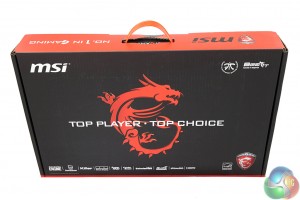
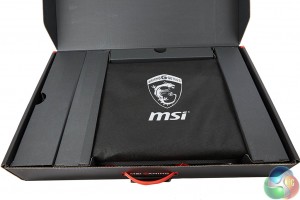
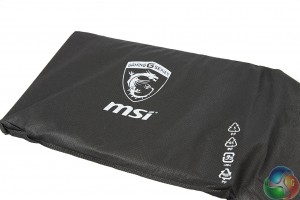
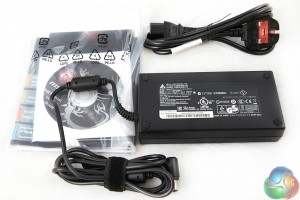
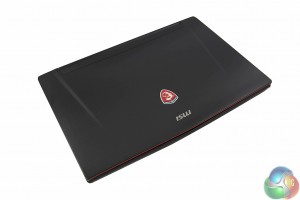
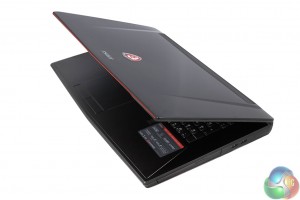
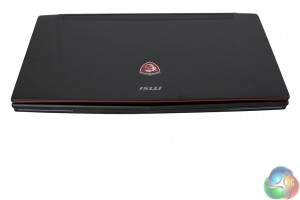
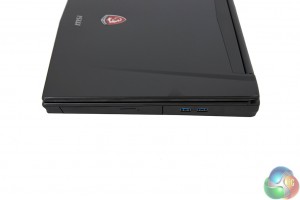
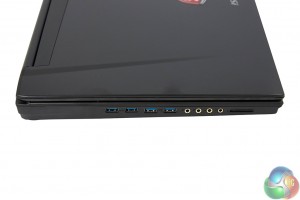
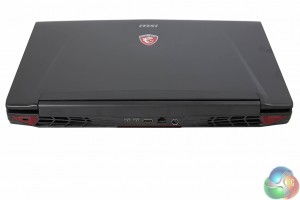
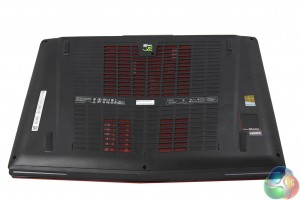
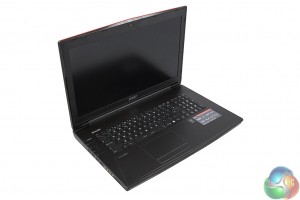
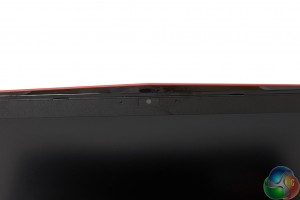
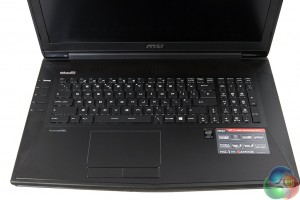
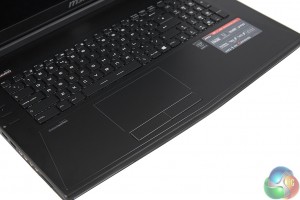
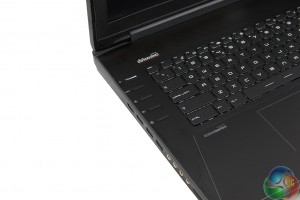
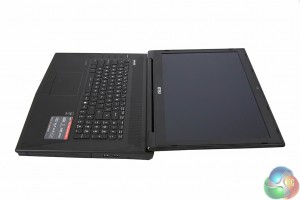
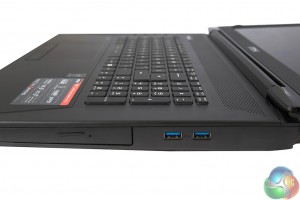
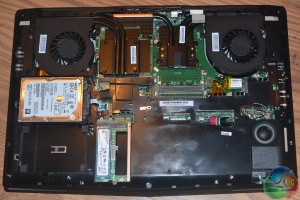
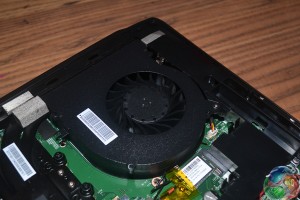

Whoa, why do I not remember Gsync for laptops being announced.
->>>
>